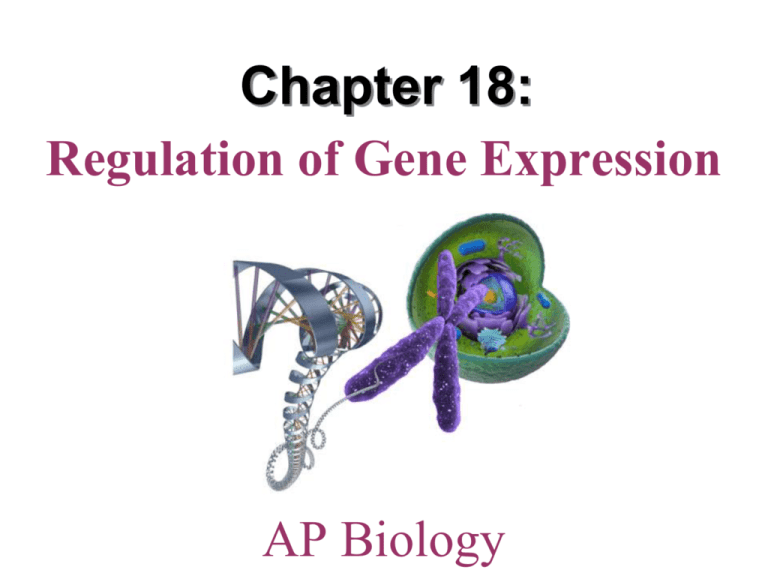Chapter 18 Regulation Of Gene Expression Answer Key
Chapter 18: Regulation of Gene Expression
In the field of biology, the regulation of gene expression is a fundamental process that allows living organisms to control the functions of their genes. This intricate mechanism ensures that genes are activated or repressed at the right time and in the right cells, allowing organisms to respond to changes in their environment, develop properly, and maintain homeostasis.
1. Understanding Gene Expression Regulation

The regulation of gene expression is a complex process that involves various mechanisms controlling the transcription and translation of genes. These mechanisms include DNA methylation, histone modification, and the action of transcription factors.
DNA Methylation
DNA methylation is a process in which methyl groups are added to specific regions of DNA, typically in the form of CpG islands. This modification can either activate or silence the expression of genes, depending on the context. It plays a critical role in various biological processes, such as embryonic development and the maintenance of cellular identity.
Histone Modification

Histone modification involves the addition or removal of chemical groups to the histone proteins around which DNA is wrapped. These modifications can alter the accessibility of genes to transcription factors and other regulatory proteins, thereby influencing gene expression. Histone modification plays a crucial role in processes like chromatin remodeling, DNA repair, and gene silencing.
Transcription Factors
Transcription factors are proteins that bind to specific DNA sequences, known as promoter regions, to regulate the transcription of genes. They can either enhance or inhibit gene expression by facilitating or blocking the binding of RNA polymerase, the enzyme responsible for transcribing DNA into RNA. Transcription factors play a vital role in cellular processes like development, differentiation, and response to environmental cues.
2. Importance of Gene Expression Regulation
The proper regulation of gene expression is essential for the normal functioning of organisms. It allows cells to adjust their gene expression profiles in response to changes in their internal and external environments. Here are some key reasons why gene expression regulation is crucial:
Development and Differentiation
During development, gene expression regulation directs the specialization of cells into different tissues and organs. It controls the timing and pattern of gene activation, ensuring that cells differentiate into specific cell types with unique functions. Without regulation, the orderly development of complex organisms would not be possible.
Homeostasis Maintenance
Gene expression regulation plays a vital role in maintaining homeostasis, the balance of internal conditions required for the proper functioning of an organism. It allows cells to respond to changes in the environment, such as temperature variations or nutrient availability, by adjusting gene expression levels. This ensures that cells can adapt and survive in different conditions.
Disease Prevention and Treatment
Aberrant gene expression regulation is associated with various diseases, including cancer, autoimmune disorders, and metabolic conditions. By understanding the mechanisms of gene expression regulation, researchers can develop targeted therapies to correct abnormal gene expression patterns, potentially leading to the prevention and treatment of these diseases.
3. Frequently Asked Questions (FAQs)
- Q: Can gene expression be altered?
- Q: What happens if gene expression is dysregulated?
- Q: How do environmental factors influence gene expression?
- Q: Can gene expression regulation be targeted for therapeutic purposes?
- Q: Is gene expression regulation the same in all organisms?
A: Yes, gene expression can be altered through various mechanisms, such as changes in DNA methylation, histone modifications, and the activity of transcription factors.
A: Dysregulation of gene expression can lead to various disorders and diseases, including developmental abnormalities, cancer, and metabolic disorders.
A: Environmental factors, such as diet, stress, and exposure to toxins, can influence gene expression by altering DNA methylation patterns, modifying histones, or affecting the activity of transcription factors.
A: Yes, understanding the mechanisms of gene expression regulation has paved the way for targeted therapies that aim to correct aberrant gene expression patterns in various diseases.
A: Gene expression regulation mechanisms can vary among different organisms, but there are core principles that are conserved across species. Studying gene expression regulation in model organisms has provided valuable insights into this process.
As we delve further into the intricate world of gene expression regulation, we continue to uncover fascinating details about how living organisms function and adapt to their surroundings. By understanding the mechanisms behind gene expression regulation, researchers aim to shed light on development, disease, and potential therapeutic strategies. Stay tuned as science continues to unravel the mysteries of gene expression regulation!
Chapter 18 Regulation Of Gene Expression
 Image Source : bio1151b.nicerweb.net
Image Source : bio1151b.nicerweb.net SOLUTION: Chapter 18 Regulation Of Gene Expression Answer Key - Studypool
 Image Source : www.studypool.com
Image Source : www.studypool.com SOLUTION: Chapter 18 Regulation Of Gene Expression Answer Key - Studypool
 Image Source : www.studypool.com
Image Source : www.studypool.com Regulation Of Gene Expression
 Image Source : studylib.net
Image Source : studylib.net Chapter 18 Regulation Of Gene Expression Active Reading Guide Answers
 Image Source : pattenmoul1997.blogspot.com
Image Source : pattenmoul1997.blogspot.com Chapter 18 Regulation Of Gene Expression
 Image Source : bio1151b.nicerweb.net
Image Source : bio1151b.nicerweb.net Chapter 18 Regulation Of Gene Expression
 Image Source : bio1151b.nicerweb.net
Image Source : bio1151b.nicerweb.net Chapter 18 Regulation Of Gene Expression
 Image Source : bio1151b.nicerweb.net
Image Source : bio1151b.nicerweb.net Solution: chapter 18 regulation of gene expression answer key. Chapter 18 regulation of gene expression. Chapter 18 regulation of gene expression. Chapter 18 regulation of gene expression active reading guide answers. Chapter 18 regulation of gene expression